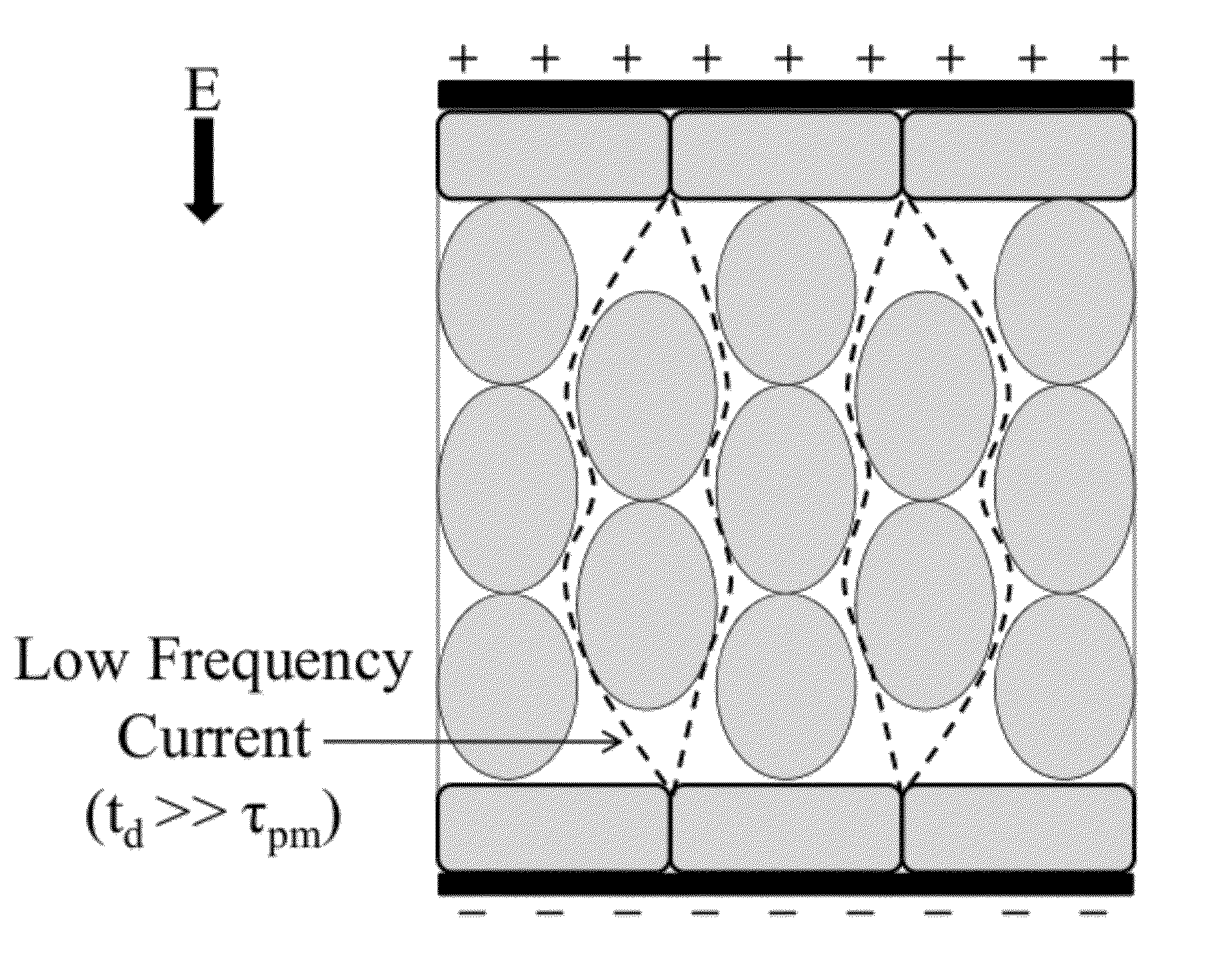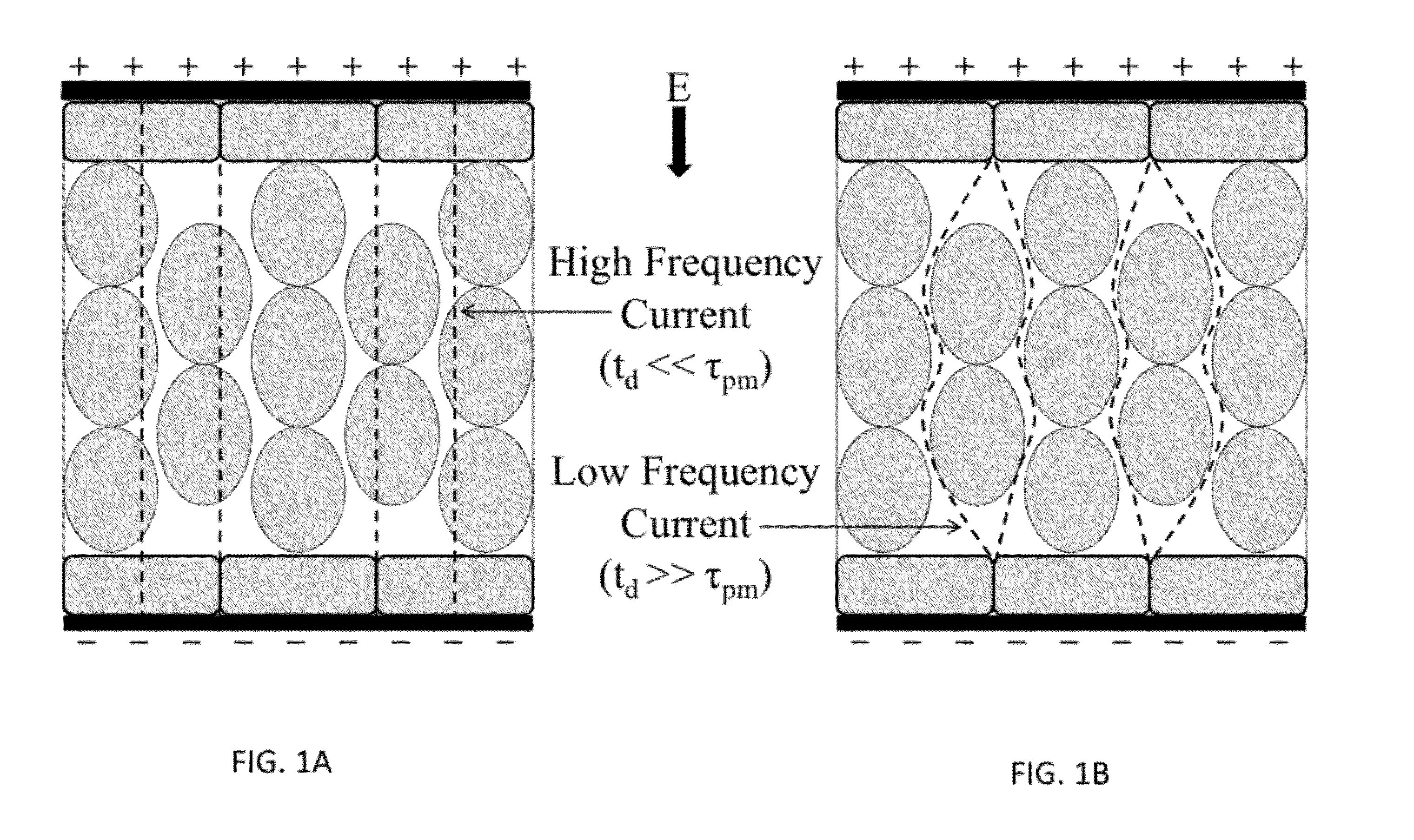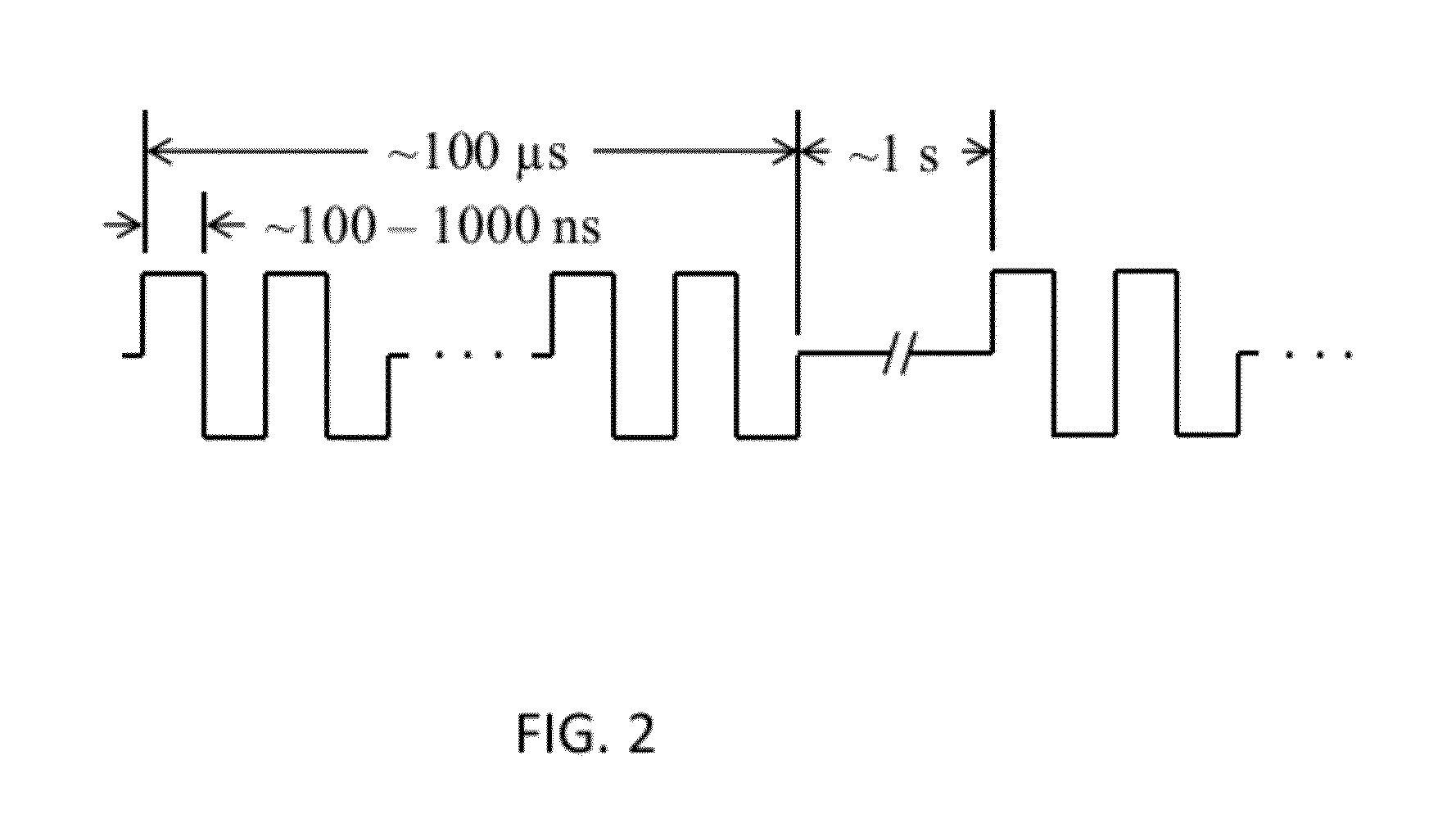High-frequency electroporation for cancer therapy
a high-frequency electroporation and cancer technology, applied in the field of biomedical engineering and medical treatment of diseases and disorders, can solve the problems of not being able to accurately predict the electric field distribution, prior knowledge of how the conductivity of a tissue is modulated in response to electroporation is not required, and achieves the effect of increasing current storage, reducing the total capacitance of the bank, and effective analog bandwidth
- Summary
- Abstract
- Description
- Claims
- Application Information
AI Technical Summary
Benefits of technology
Problems solved by technology
Method used
Image
Examples
example 1
[0088]High-frequency electroporation results in more uniform and predictable treatment outcomes in heterogeneous tissues.
[0089]A 2D axisymmetric FEM representative of a cylindrical section of non-infiltrated fat encapsulated by dry skin was simulated using COMSOL 3.5a (Burlington, Mass.). The electric potential distribution within the tissue was obtained by transiently solving:
-∇·(σ∇Φ)-ɛ0ɛr∇·(∂∇Φ∂t)=0(7)
[0090]where Φ is the electric potential and σ and εr are the conductivity and relative permittivity of each tissue layer, respectively, which depends on frequency (Table 1). Equation (7) is obtained from Maxwell's equations assuming no external current density (J=σE), no remnant displacement (D=ε0εrE), and the quasi-static approximation. This approximation implies a negligible coupling between the electric and magnetic fields (∇×E=0), which allows for the expression of electric field only in terms of electric potential:
E=−ΛΦ (8)
[0091]Dielectric properties of the bulk tissue were cho...
example 2
[0094]High-frequency electroporation results in homogeneous energy deposition and reduces the potential for thermal damage in low passive conductivity tissue.
[0095]The temperature distribution in the model described in EXAMPLE 1 was obtained by transiently solving a modified version of the Pennes bioheat equation (see Pennes, H. H., Analysis of tissue and arterial blood temperatures in the resting human forearm. J Appl Physiol, 1948. 1(2): p. 93-122) with the inclusion of a Joule heating term:
ρC∂T∂t=∇·(k∇T)+ρbωbCb(Tb-T)+Qm+J·E(9)
[0096]where T is the tissue temperature, Tb is the blood temperature, k is the thermal conductivity of the tissue, C and Cb are the tissue and blood specific heat, respectively, ρ and ρb are the tissue and blood density, respectively, Qm is the metabolic heat source term, ωb is the blood perfusion coefficient, and |J·E| is the Joule heating term. All thermal tissue properties are given in Table 3. Fiala, D., K. J. Lomas, and M. Stohrer, A computer model of h...
example 3
[0102]High-frequency electroporation can overcome shielding effects of low passive conductivity tissues and induce electroporation in underlying layers.
[0103]The analytical model for TMP described in this specification was utilized to investigate electroporation in a hypothetical cell located along the centerline (r=0 mm) in the middle of the fat (z=0) and skin (z=5.75 mm) layers of the FEM described in EXAMPLE 1. The equations for TMP are derived under the assumption that there is no influence on the microscopic electric field from neighboring cells. Therefore, the macroscopic electric field in the bulk tissue predicted by the FEM dictates the microscopic electric field experienced by the cell. The vertical z-component of the electric field was imported from the specific locations within FEM into Mathematica to account for polarity changes. The radial r-component was neglected due to the fact that it never surpassed 3 V / cm as current traveled primarily in the z-direction. Non-unifo...
PUM
 Login to View More
Login to View More Abstract
Description
Claims
Application Information
 Login to View More
Login to View More - R&D
- Intellectual Property
- Life Sciences
- Materials
- Tech Scout
- Unparalleled Data Quality
- Higher Quality Content
- 60% Fewer Hallucinations
Browse by: Latest US Patents, China's latest patents, Technical Efficacy Thesaurus, Application Domain, Technology Topic, Popular Technical Reports.
© 2025 PatSnap. All rights reserved.Legal|Privacy policy|Modern Slavery Act Transparency Statement|Sitemap|About US| Contact US: help@patsnap.com



